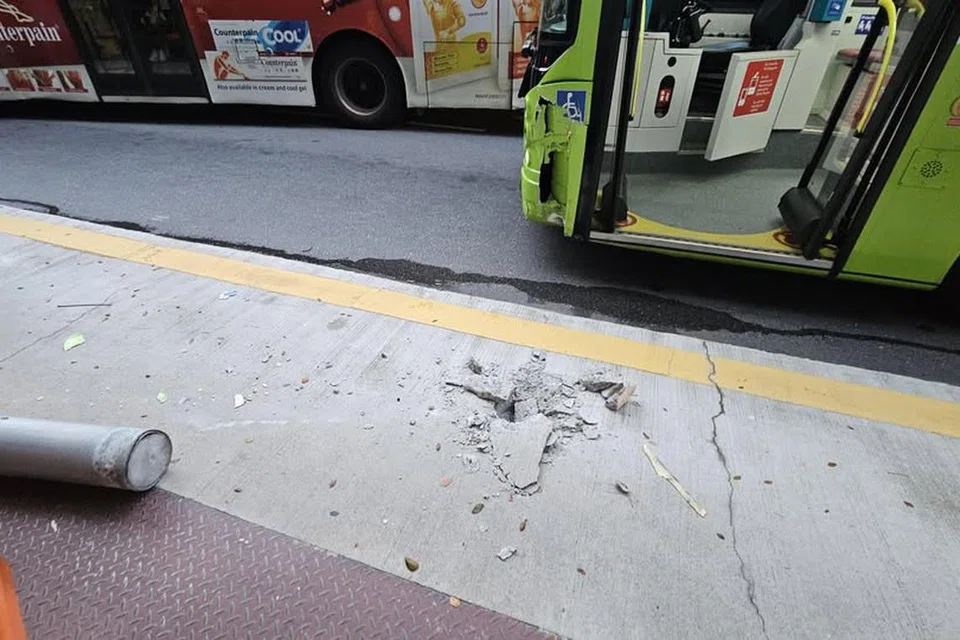
Bus stop bollard that fell after accident was built to specifications: LTA
SINGAPORE – A bus stop bollard which sparked much online speculation after being knocked over by a bus was designed and built to the Land Transport Authority’s (LTA) specifications.
A photo of the cleanly dislodged bollard, which made its way across various social media platforms last week, left many wondering if it had been correctly installed and if it should have been anchored deeper in the ground to stop the bus more effectively.
In a media reply, LTA said the incident occurred at about 8.20am on Feb 3 at the bus stop outside Tanah Merah MRT station’s Exit B. No injuries were reported, and the bus stop was repaired on Feb 5.
The LTA explained that its bus stop bollards are designed to absorb the impact from a vehicle while not causing serious injury to passengers in the bus.
“If the impact is too strong, the first bollard hit may tilt or fall to dissipate the energy (of the impact), and the next bollard, if hit, can stop the vehicle completely,” it said.
This method of dissipating the energy of a vehicle hitting the bollards gives passengers in the vehicle a higher chance of survival.
Singapore Road Safety Council chairman Bernard Tay said it is not uncommon for bus stop bollards to become dislodged in such accidents.
“The more important thing is (for the vehicle) not to hit the commuters or pedestrians. If the bollard is damaged, so be it.”
A variety of bollards are used in Singapore and serve different functions.
Commonly found in carparks and in front of buildings, they can be made from different materials, such as cement, metal and plastic. Some are fixed, while others are built to be retractable and even removable.
Apart from keeping people safe during accidents, a common purpose bollards have is to limit vehicle access to certain areas.
Retractable bollards allow these restrictions to be temporary.
Plastic bollards, on the other hand, are often used to delineate road lanes and control traffic flow.
https://www.straitstimes.com/singap...gn=stfb&utm_medium=social&utm_source=facebook

